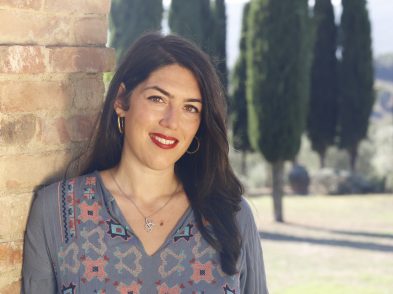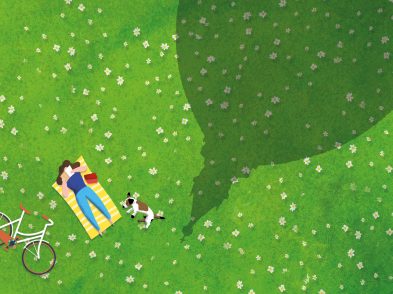Welcome to Florence’s frontline, to the bucolic, bijou and family-run wineries that comprise Chianti Colli Fiorentini. One of the seven Chianti subzones, these cantine are bewilderingly overlooked in favour of their more famous Chianti Classico counterparts, although they are closer to the Tuscan capital and produce authentic and approachable wines that are pleasurable to drink.
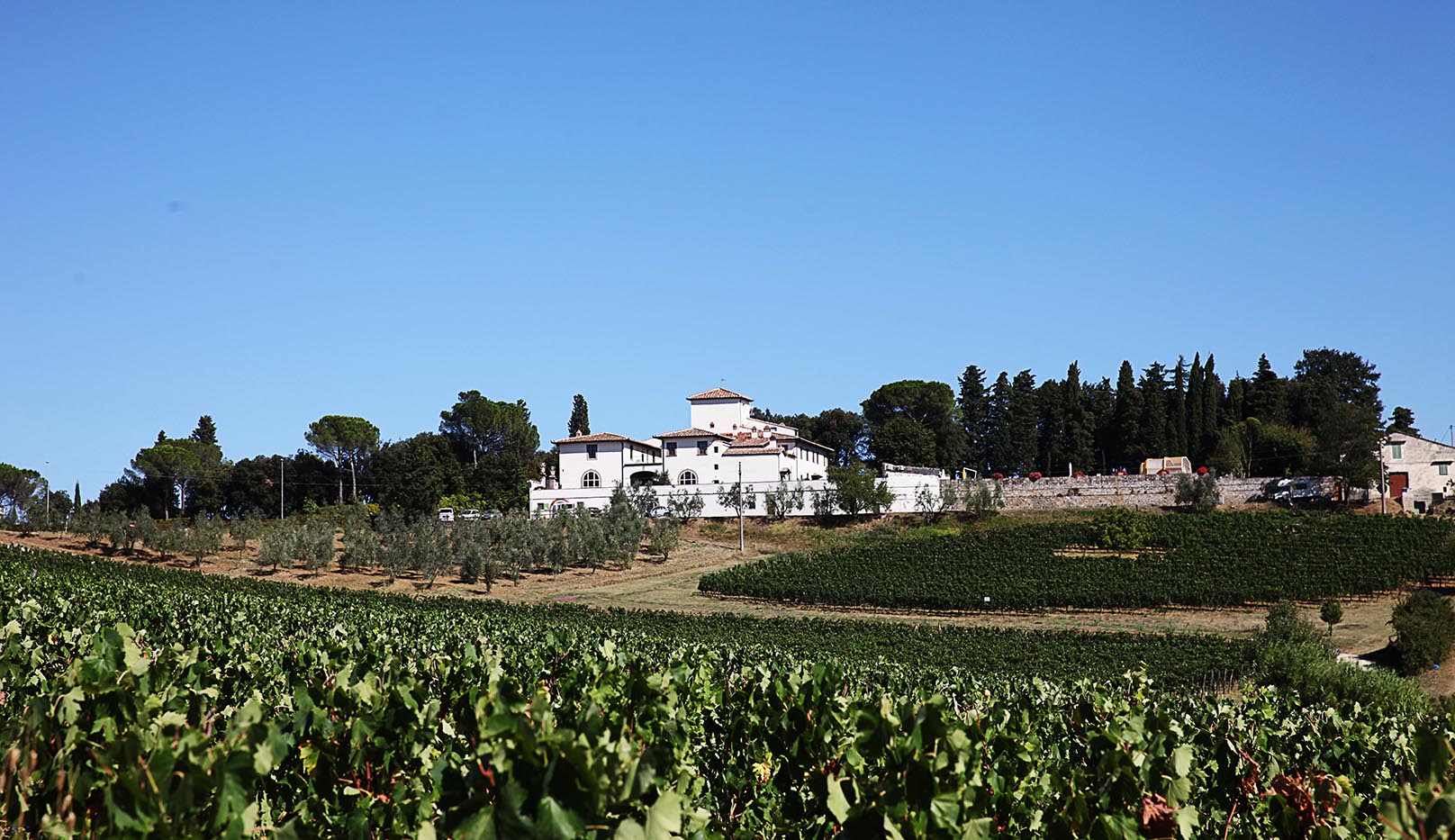
Fattoria San Michele a Torre
“South of Florence, north of Classico” is how Bastianich and Lynch placed Chianti Colli Fiorentini in their 2002 landmark book for the American market Vino Italiano. The Regional Wines of Italy. Over the years, the appellation’s geography has extended across 18 municipalities and now includes the hills immediately to the east of Florence, encompassing Fiesole, Pontassieve and Rignano sull’Arno. It marks progress for a DOCG that dates to 1932.
Today, 27 producers make up the Consortium, which was founded in 1994 to protect the appellation through strict production guidelines, low per-hectare yield, careful grape selection and modern winemaking technology. Once hailed as “vino cittadino” (the city’s wine), the association’s symbol is the lion that presides over Florence, emblazoned on the Torre di Arnolfo at the Palazzo Vecchio.
I remember my first sip of Chianti Colli Fiorentini on a spring day. The Malenchini family has been farming the land above Grassina for nearly 200 years, and their experience shows. Irises, violets and dolce far niente: the bouquet is a bouquet, regardless of the wine’s youth. Rounded, fruit forward and voluptuous in the mouth, this Sangiovese and Canaiolo blend is a step up from the producer’s sparkle-studded Chianti. I was hooked.
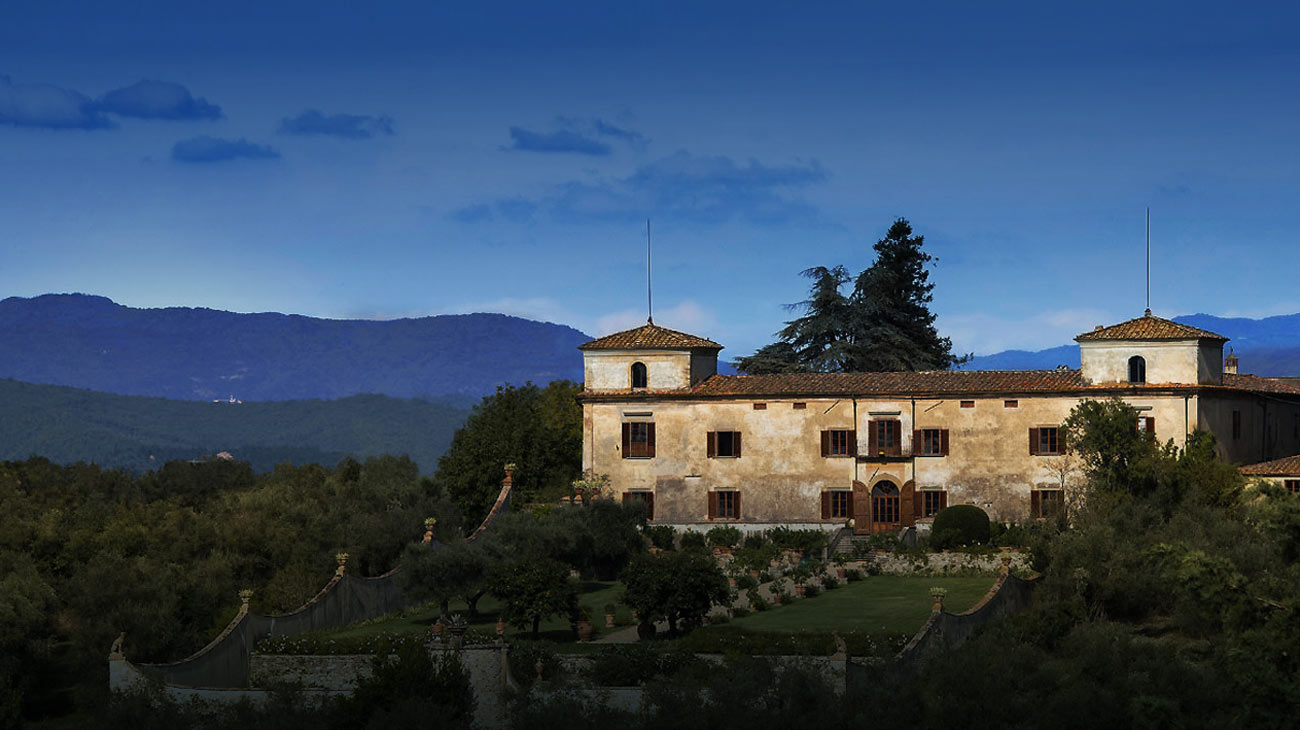
Villa Medicea di Lilliano, Malenchini
As Chianti Colli Fiorentini covers a succession of hills and valleys, its producers claim that the subzone’s success as a winemaking region lies in its diversity: the vineyards vary in altitude from 150 to 400 metres above sea level and the soil types differentiate dramatically from boulder-like earth around Bagno a Ripoli to alberese, a marl limestone with a high concentration of calcium carbonate, in the Val di Pesa. Most of the vineyards look to the south, though some are north, east or west facing. While the climate is usually temperate, vice-president of Consorzio Chianti Colli Fiorentini and estate manager of La Querce Marco Ferretti reports that 20 per cent of this year’s grapes have been lost in the DOCG, sadly within the norm this spring in Tuscany due to the frost damage afflicting Europe—though the mood remains resilient. A trait that is intrinsic to the local character, where campanilismo is key thanks to a proud centuries-old connection to Florence. Here, it’s more about territory than terroir.
This thirst for typicality is what led Chianti Colli Fiorentini producers to go green. Twenty-five per cent of estates belonging to the consortium now enjoy organic certification status, with others are undergoing conversion, aiming for semi-organic status or subscribing to natural winemaking. Tenuta San Vito, in the wilds of Fior di Selva, was the first pioneer of this movement back in 1985. “Darno” (90% Sangiovese, 10% Canaiolo) is a woodland walk, forest fruits delighting your senses. Neri Gazulli explains his estate’s approach to clean wines, “We only use substances derived from organic minerals, both for fertilizers and anti-pest treatments, which allows the soil to maintain its productive capacity without leaving any chemical residues in the soil or in the wines.”
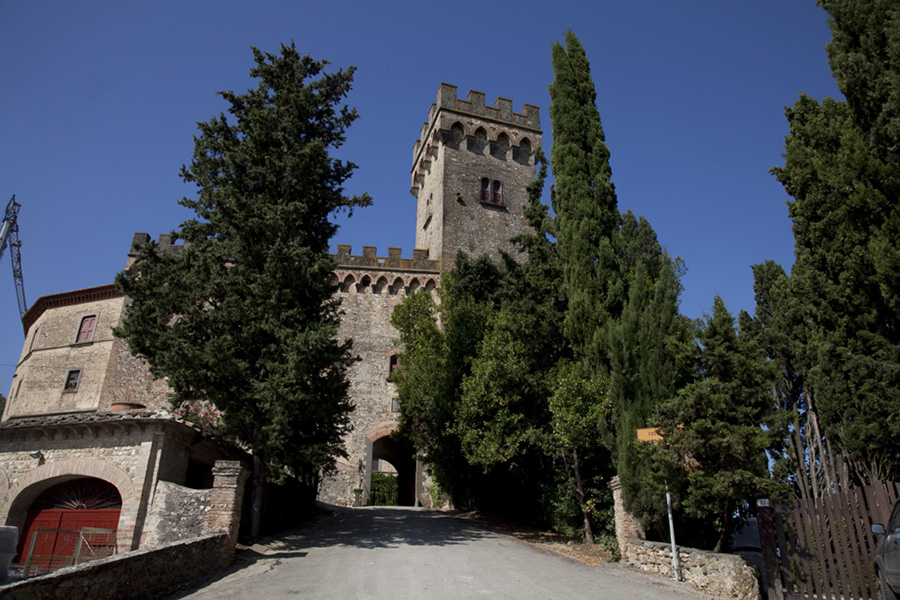
Castello di Poppiano, Conti Guicciardini
The substance is Sangiovese throughout the DOCG, although the appellation’s rules dictate that the native grape may as low as 70 per cent, blended with other Tuscan-grown varietals (international grapes are permitted, although Cabernet Franc and Cabernet Sauvignon, together or in purezza, must not exceed 15 per cent), and even 10 per cent of white grapes are allowed. La Querce’s “La Torretta”, Castelvecchio’s “Il Castelvecchio” and Castello di Poppiano’s Riserva all raise the bar, benefitting from the plush roundedness that Merlot alone can bestow in a bottle.
Outside of the DOCG regulations, the ancient indigenous Canaiolo Nero is having a heyday in some Chianti Colli Fiorentini cantine. Castelvecchio’s “Numero Otto” has an earthy nose, a scent of violets and a playful dash of grassiness: an unforgettable 100% Canaiolo Nero. Plus, the acidity is spot on, a hallmark of Filippo Rocchi’s expressive wines from San Casciano Val di Pesa. As Rocchi states in Ian D’Agata’s seminal book Native Wine Grapes of Italy, Canaiolo Nero “…is an underrated variety that gives wines that surprise for their elegance and drinkability.” Equally surprising is La Querce’s “Belrosso”, another pure Canaiolo Nero, whose first vintage in 2015 was met with rave reviews among critics for its freshness and fruitiness.
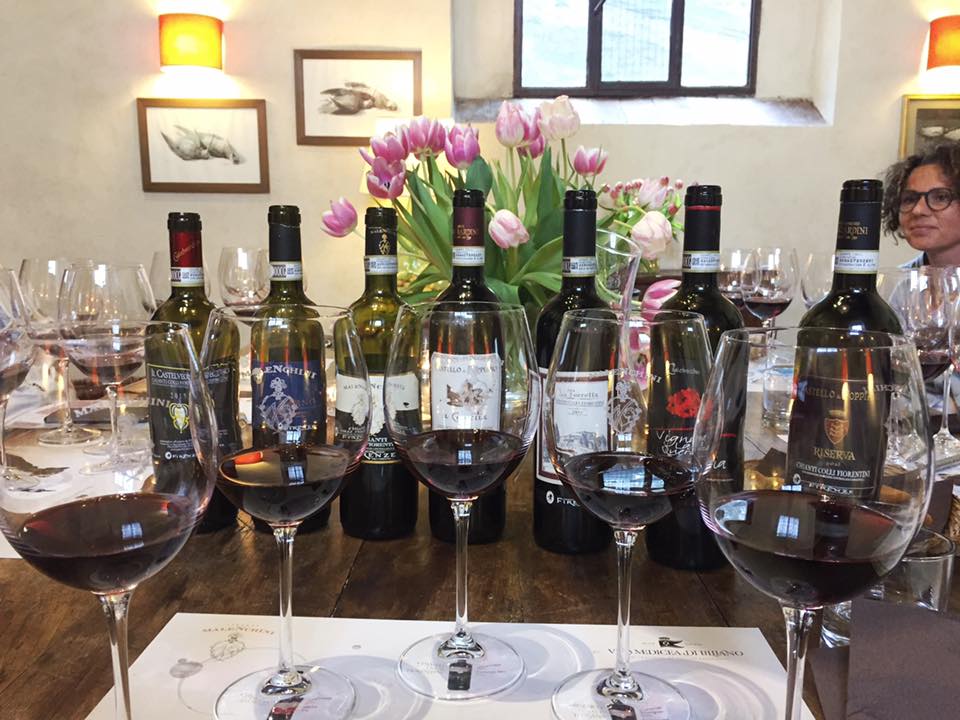
A tasting of Chianti Colli Fiorentini wines
But what is most beguiling about Chianti Colli Fiorentini are the people behind the bottles, their courage to uphold standards and absolute conviction in the personal touch. As one of the producers wrote to me after a tasting for the purposes of this article, “The doors of our cantine will always be open for your passion.” The passion is mutual.


